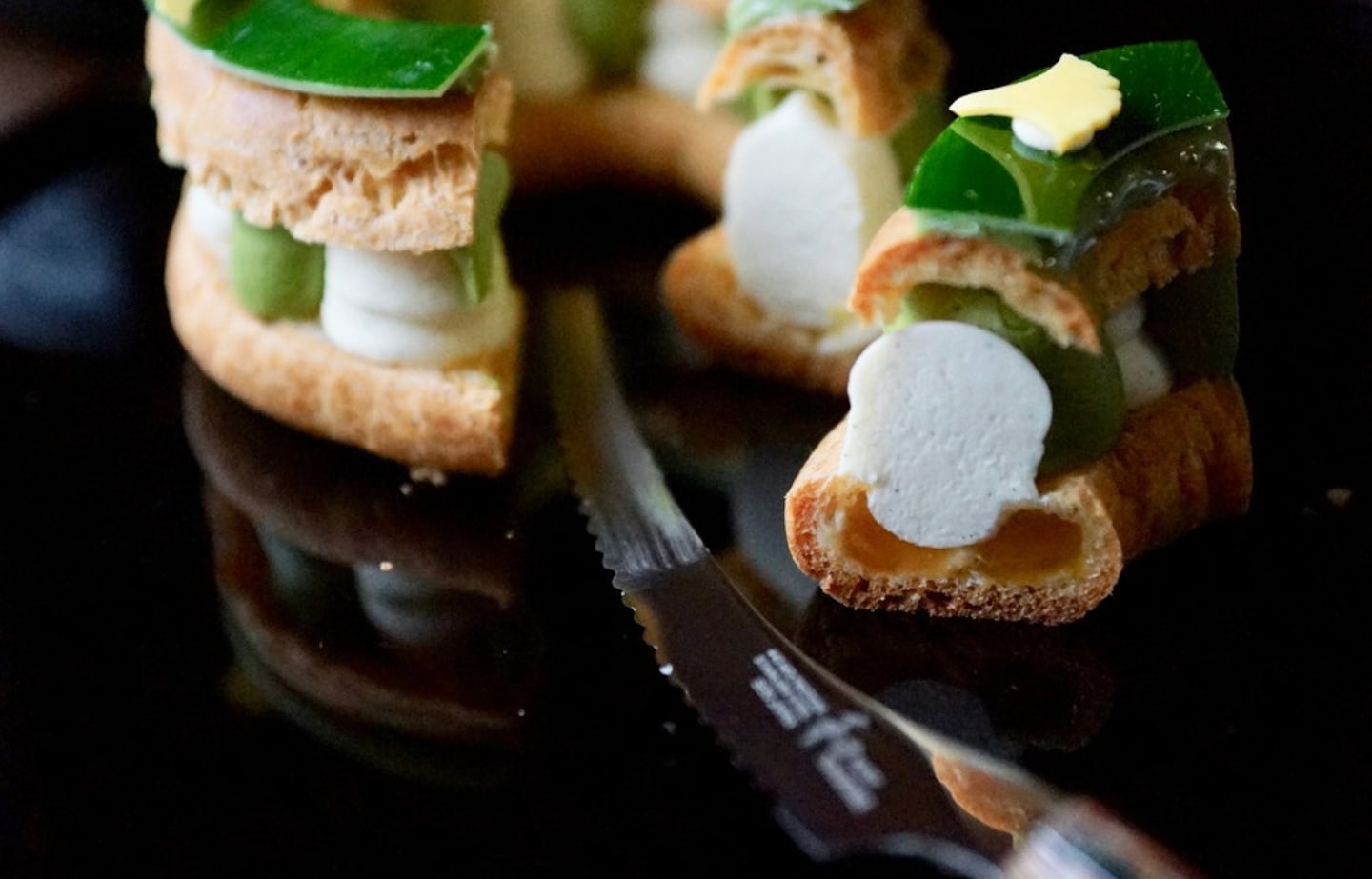The Ultimate Wedding Cake Knife
You sink the unusually curved serrated knife down into a cake gently, moving through with a slight sawing motion. Then, with a flick of the wrist, you draw the tip back across the bottom of the cake in one smooth motion. Before you now is a cleanly cut cake with every bit of its decorative cream perfectly in place.
By Local Creators' Market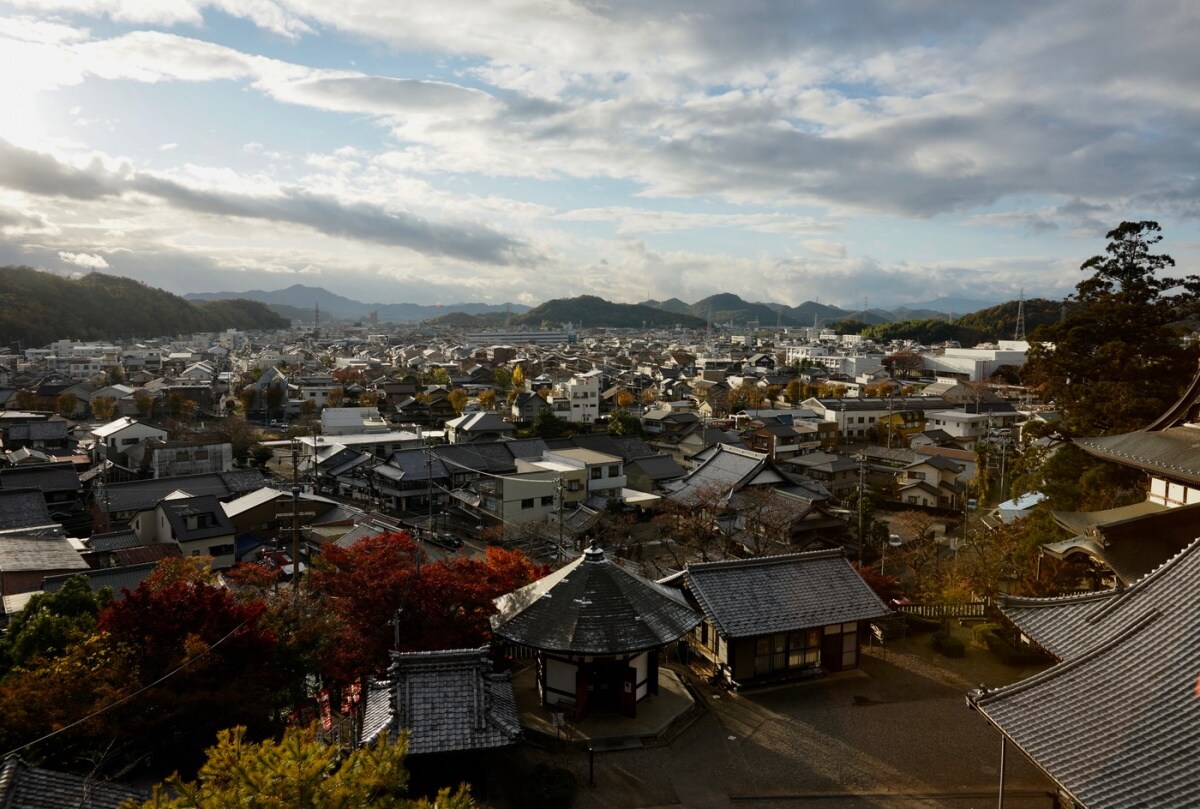
This wonder tool is the work of a knife maker in Seki, Gifu Prefecture, where swords have been forged since the late Kamakura Period (1185–1333). By the height of the Muromachi Period (1336–1573) there were more than 300 competing swordsmiths, and while the products have changed, Seki remains one of the world’s leading manufacturing centers of quality blades. Today there are roughly 400 knife makers concentrated in the city.
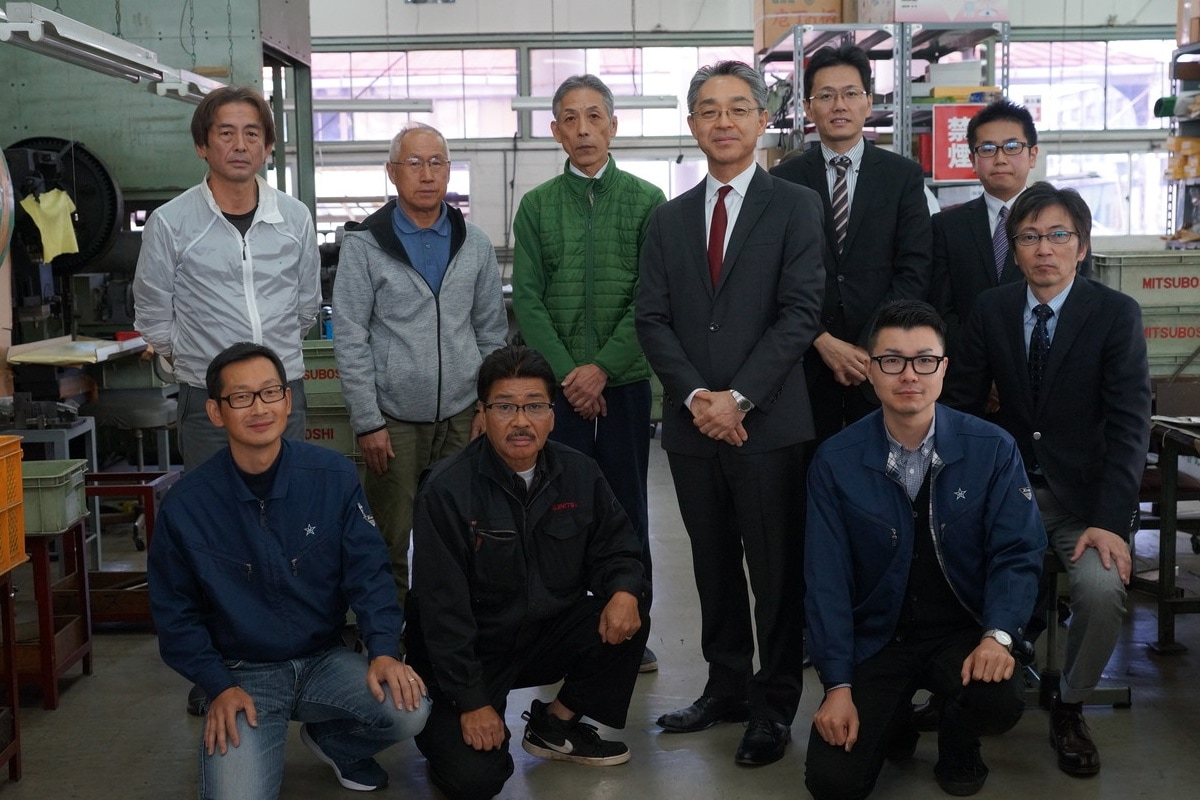
The cake knife described above is one of a series offered by Mitsuboshi Cutlery under the brand name Nagomi. The high-quality line offers eight designs, including a bread knife and several general-purpose knives—all handcrafted through five different processes carried out by five different companies.
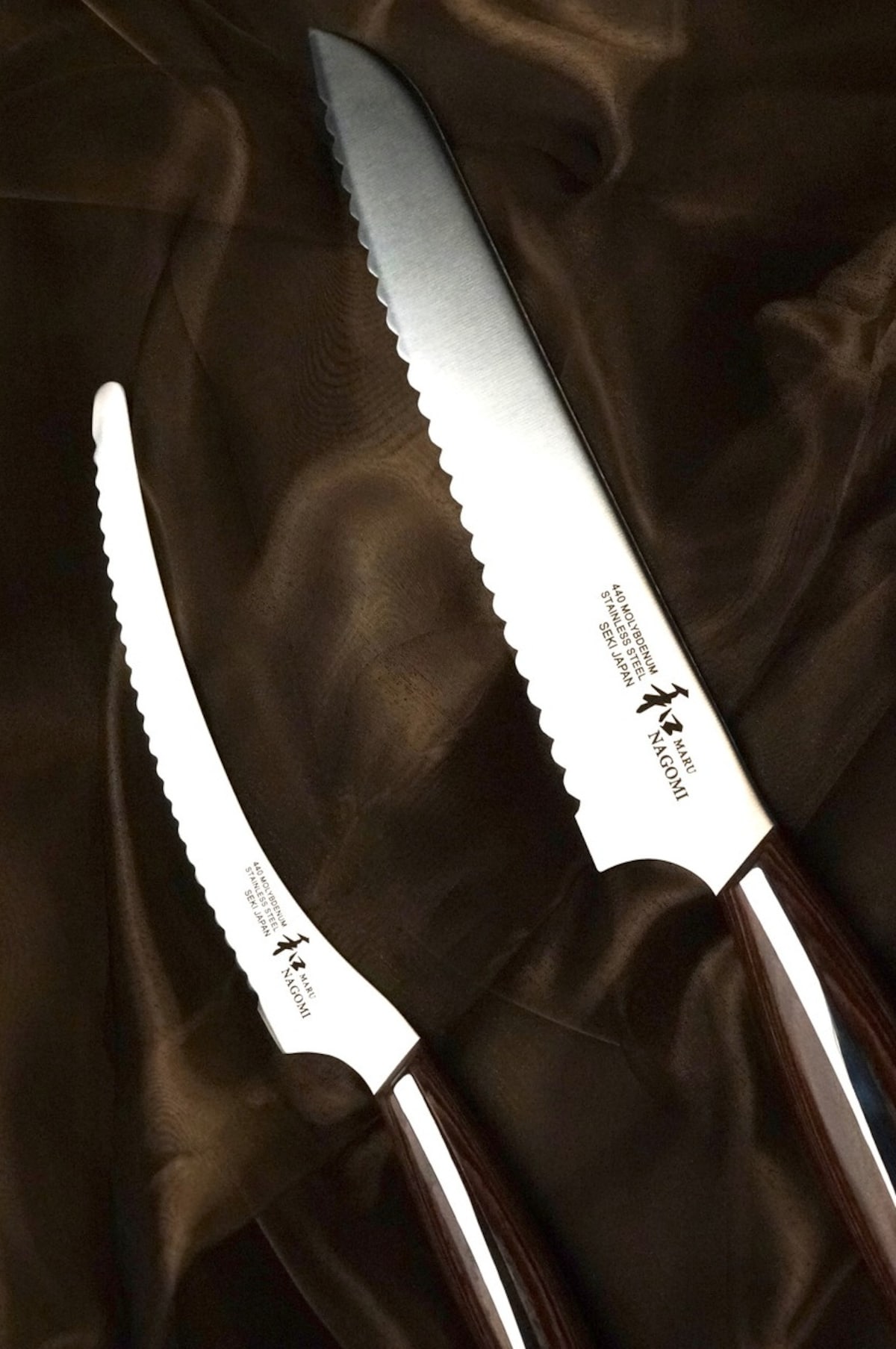
The material used is 440A stainless steel, flouting the industry trend toward high-carbon blades. Though favored for their hardness, high-carbon knives are brittle and difficult to sharpen. In contrast, high-chrome Nagomi blades are neither too hard nor too soft.
The 440A grade is an excellent material for producing, in the final step of the edging process, just the right bari, or burr, on the blade. This is a minute fold of metal formed on the opposite side of the knife edge when it is ground. Theoretically the burr should be eliminated when the knife is sharpened, but leaving a trace of it actually makes the knife cut better and helps it stay sharp longer.
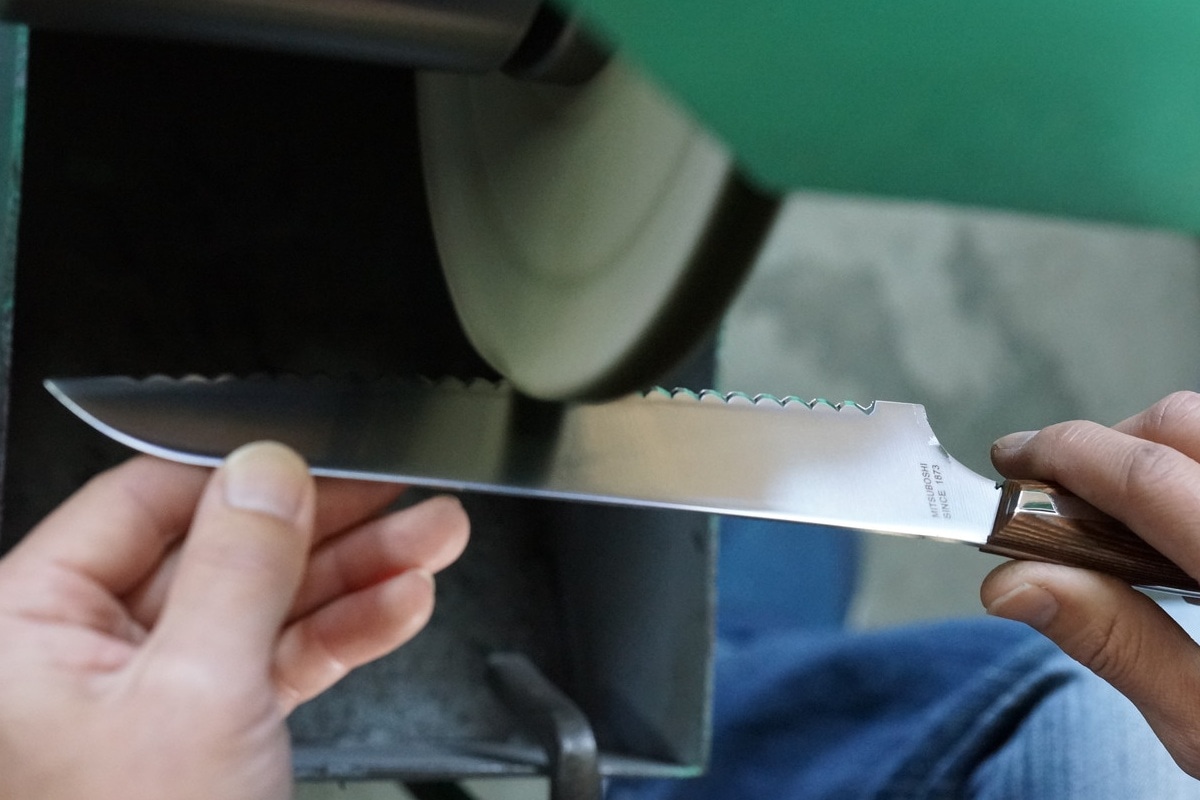
Takahisa Watanabe, president of Mitsuboshi Cutlery, says 440A steel was first recommended to him by a Seki knife polisher who lauded its ability to “hold a good burr.” Although the burr is so minute you need a microscope to see it, a seasoned polisher can tell it is there just by the feel. Too much burr leaves a saw-like edge that will not cut well. A slight trace is just right, especially for knives that are likely to be sharpened in the home rather than in a professional kitchen.
To ensure a sharper edge, Nagomi knives are purposely made from a harder steel, with Rockwell ratings of 57 or 58, rather than the usual maximum of 56. As the blades are stamped out of sheet metal rather than being forged, there is no fear of their cracking.

Here we see a single knife blank and the stainless-steel plate from which it was stamped. Relying on their eyes alone, seasoned craftsmen deftly shift the position of the plate to yield as many blades as possible.
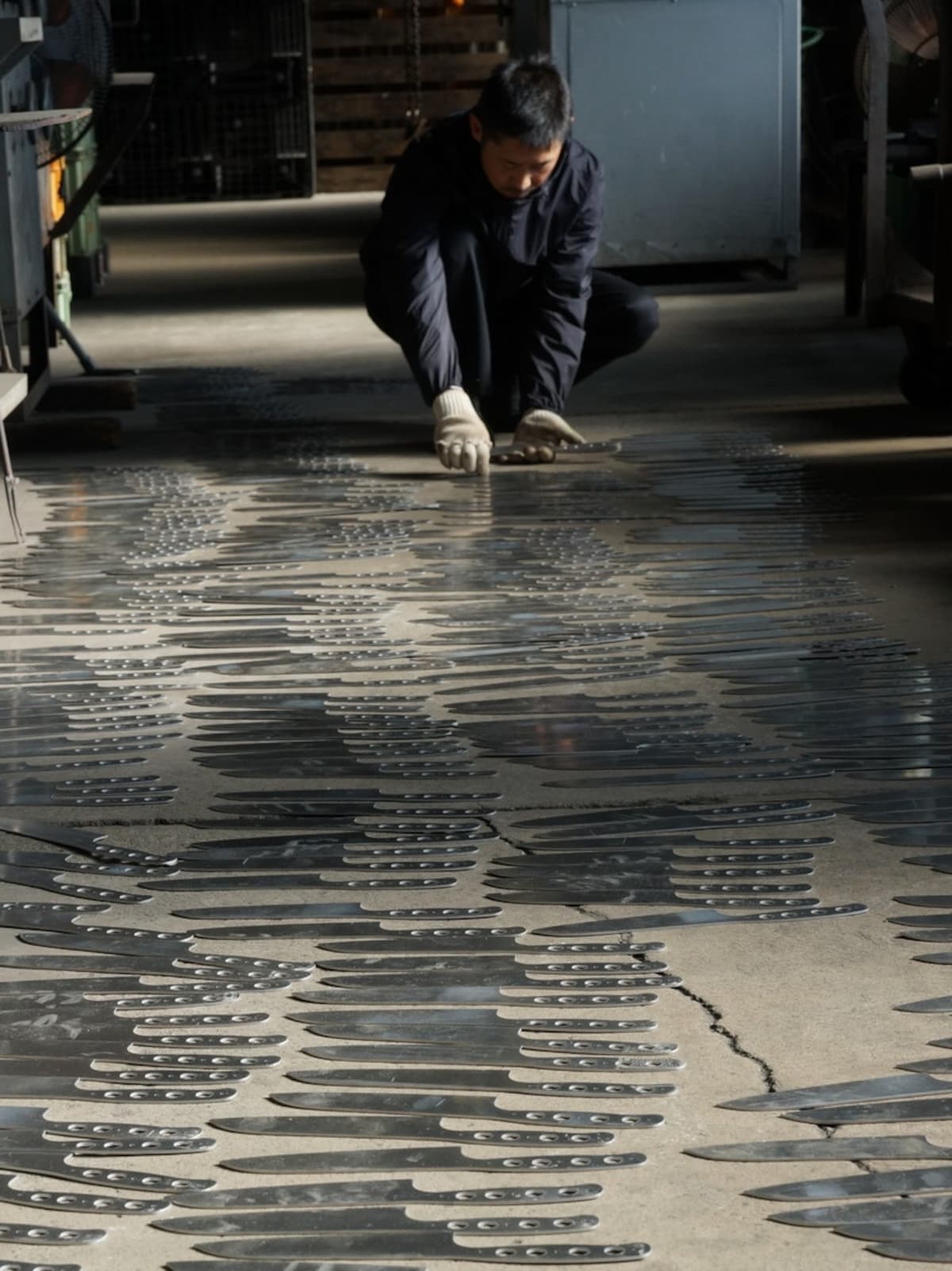
After tempering, blades are cooled at room temperature. Each one is rigorously inspected.


